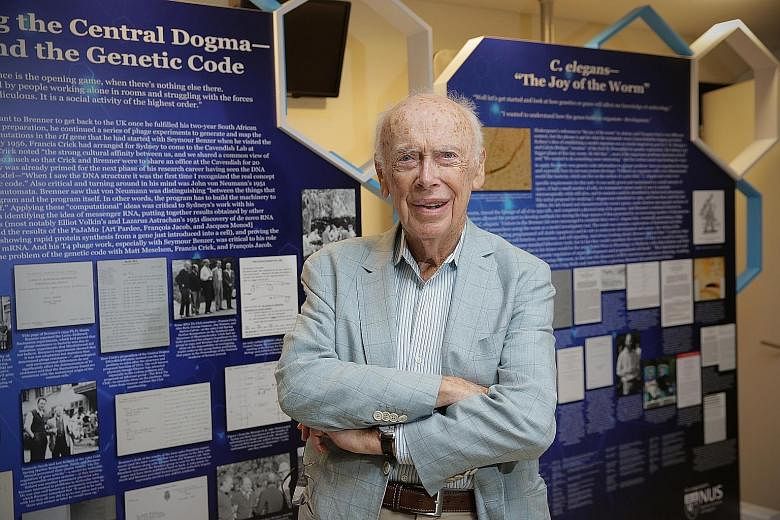Maverick scientist James Watson, the first living Nobel Prize winner to sell his medal, has donated most of the US$4.76 million (S$6.8 million) from the sale.
The money from last year's auction of his Nobel medal went mainly to research and academic institutions such as the University of Chicago and Cold Spring Harbor Laboratory, Dr Watson, 87, told The Straits Times.
Now Chancellor Emeritus of Cold Spring Harbor Laboratory in New York, he was in Singapore last week for a symposium and exhibition to celebrate the life in science of fellow Nobel laureate, Dr Sydney Brenner.
Dr Watson's donations include US$1 million (S$1.4 million) to the Cold Spring Harbor Laboratory to fund its biomedical research and education programmes.
"And I had given money to the new Francis Crick Institute (in Britain) because... my career depended so much on encouragement given to me by Francis Crick," said Dr Watson, who added that some money had gone to charity.
Dr Watson, an American, won the Nobel Prize for Physiology or Medicine in 1962 for the discovery of the DNA double-helix structure, along with scientists Francis Crick of Britain and Maurice Wilkins of New Zealand.
One of his motivations for selling the medal, Dr Watson was earlier quoted as saying, was to "restore some of his reputation" after his comments in 2007 linking intelligence to race, The New York Times reported.
He had also told The Financial Times that he wished to use some of the money to buy a painting by English painter David Hockney.
When asked by The Straits Times about this, he said: "David Hockney had once drawn me so I'd like a Hockney but his paintings cost about $2 million… I never spend large sums of money on a painting."
Dr Watson's medal was bought by Russian tycoon Alisher Usmanov, who gave it back to him about six months later.
The 23-carat gold medal measuring 66mm in diameter now sits in a bank vault, said Dr Watson, who also has a replica brass medal. He has seen the actual medal only about three times.
"Because I had the brass medal, I thought why not sell the gold medal? I would never use it. And then the wonderful Russian said 'well, you should have it', and gave it back to me and so it's back in the bank vault," said Dr Watson.
During the hour-long interview, the octogenarian spoke of his love for art and music. While he cannot draw, he said, he loves beautiful art. An uncle was an artist and Dr Watson had often been taken to museums when growing up.
"I was lucky. We were poor but I was brought up to be cultured. Our family was poor during the Great Depression so my father never had very much money but... I was brought up in an environment where books were the most important thing," he said.
Dr Watson is no stranger to controversy. In a 2007 interview, he said he was "inherently gloomy about the prospect of Africa" because "all our social policies are based on the fact that their intelligence is the same as ours - whereas all the testing says not really". In another interview, he said that "some anti-Semitism is justified".
Despite having apologised for his comments in 2007, which he said made him an "unperson", he is not afraid to make potentially offensive remarks.
For example, he said that while some people like the title of his book, Avoid Boring People: Lessons From A Life In Science, others did not. "It looks like I was an intellectual snob that...I want bright people. But I have nothing to say to dumb people. But society doesn't like to say there are dumb people of Singapore. Well, I bet there are a few dumb people," he said, with a laugh.
SEE SCIENCE


